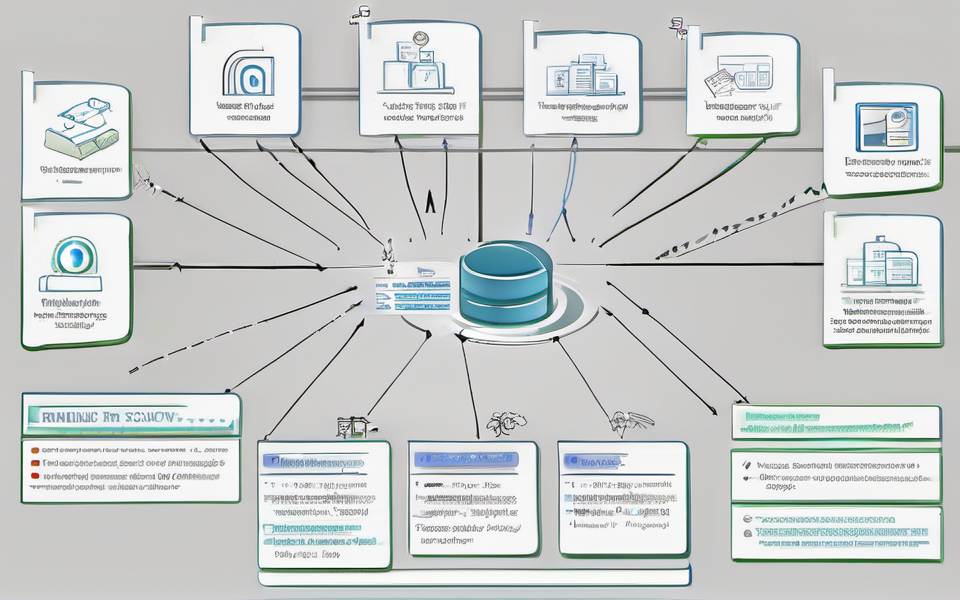Are you tired of feeling vulnerable in a world that’s increasingly reliant on technology? The truth is, traditional security systems are simply not enough. We live in an age of advanced cyber threats and sophisticated hacking techniques that can compromise your safety and privacy in a heartbeat. But don’t worry, there’s a better way! Imagine a security system that isn’t just reactive but proactive, that anticipates threats before they even arise, and leverages the power of artificial intelligence to keep you one step ahead. This isn’t just a futuristic dream – it’s the future of security, and it’s happening now.
Embrace a New Era of Security: Beyond the Traditional
The time has come to move beyond the limitations of old-fashioned security measures. While traditional systems like CCTV cameras and alarm systems play a vital role, they are inherently reactive. They are designed to detect threats after they occur, leaving you vulnerable to damage and disruption. The future of security lies in embracing a proactive, forward-thinking approach.
Redefining Security with AI: Predictive Analytics and Proactive Defense
AI-powered security systems offer a paradigm shift in how we approach safety. By leveraging the power of data analysis and machine learning algorithms, these systems can anticipate and prevent threats before they materialize. They do this by:
- Analyzing historical data: AI algorithms learn from past incidents, recognizing patterns and identifying vulnerabilities in your security infrastructure.
- Predicting potential threats: Based on identified patterns, AI systems can predict the likelihood of specific threats and alert security personnel in advance.
- Adaptive Learning: AI constantly updates its understanding of threats by continuously analyzing data from various sources, including threat intelligence feeds and real-time data from sensors. This allows it to learn and adapt to emerging threats and vulnerabilities.
This proactive approach gives you a critical edge against potential breaches, enabling you to take preemptive measures and minimize the risk of any damage.
Real-World Examples of AI in Security: How It’s Already Making a Difference
Cybersecurity:
- Intrusion detection and prevention systems (IDPS): AI-powered IDPS systems utilize machine learning algorithms to identify suspicious activities in network traffic. By analyzing data patterns in real-time, these systems can detect zero-day attacks, which are new vulnerabilities that haven’t been documented yet, providing a crucial line of defense. The more data these systems have to analyze, the more effective they become.
- Phishing and malware detection: AI algorithms can identify malicious emails and websites that are designed to trick users into revealing personal information.
- Cybersecurity threat intelligence: AI plays a key role in gathering and analyzing information about new threats and vulnerabilities, empowering security professionals with real-time threat intelligence to proactively address potential risks.
Physical Security:
- Facial recognition systems: These systems use AI to identify individuals in real-time, enabling authorized access to restricted areas while deterring unauthorized entry. They are increasingly being adopted in public spaces, airports, and financial institutions to enhance security and control.
- Video surveillance: AI-powered video surveillance systems are transforming the way we monitor security threats. They use algorithms to analyze footage in real-time, identify suspicious behavior (like someone attempting to break into a building), and send alerts to security personnel. This eliminates the need for constant human monitoring, freeing security personnel to focus on more complex tasks.
- Automated intrusion detection: AI systems can analyze sensor data, including motion detectors, vibration sensors, and thermal cameras, to detect intrusions and send real-time alerts. These systems can automatically trigger audio/visual alarms, lockdown procedures, and contact law enforcement, significantly reducing response times.
Unlocking the Potential: Implementing AI Security Systems
You might be wondering, how do you implement these advanced AI systems in your own environment? Here’s the good news – it’s not as complicated as you might think! While advanced implementations can require expertise, you don’t need to be a tech wizard to get started. Here’s what you need to know:
1. Determine Your Specific Needs:
The first step is to define your unique security needs and challenges. What specific threats are you most concerned about? What are your vulnerabilities? Are you more focused on physical security or cyber security? This will guide you in selecting the most appropriate AI-powered security systems.
2. Partner with Experts:
There are numerous vendors specializing in AI-based security solutions. It’s important to choose a provider that is experienced, reputable, and capable of meeting your specific requirements. This can involve selecting companies that offer expert integration services to ensure smooth installation and seamless operation of your chosen solutions.
3. Embrace Continuous Learning:
AI security is a rapidly evolving field, so ongoing learning is critical to stay ahead of the curve. Invest in training your staff on AI security best practices, and continuously assess your existing security measures to ensure they remain effective.
Key Takeaways:
- The future of security lies in leveraging AI’s power to predict and prevent threats proactively.
- AI-powered systems are transforming both physical and cyber security, offering increased protection against emerging threats.
- Implementing AI-based security systems involves carefully evaluating your needs, selecting expert partners, and investing in ongoing training.
- Embrace a mindset of constant adaptation as AI security solutions rapidly advance.
By taking these steps, you can unlock a new level of security for yourself, your business, and your community. Don’t settle for yesterday’s security – embrace the future and make the switch to AI-powered protection.









